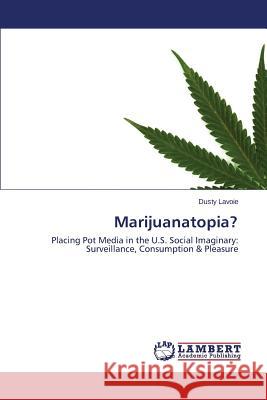Marijuanatopia? » książka
Marijuanatopia?
ISBN-13: 9783659553776 / Angielski / Miękka / 2014 / 360 str.
This book conducts a critical hermeneutic analysis of various popular media artifacts in which the representation of the illegal drug marijuana figures significantly. Surveying a variety of media, I argue that the invocation of marijuana in these artifacts encompasses the thematics of surveillance, consumption, and pleasure, and that these tropes can be productively understood in terms of their ideological, aesthetic, and performative significations in the social imaginary. TV shows (Weeds, South Park, Family Guy, American Dad , True Blood, Supernatural, and The Vampire Diaries), films (Adventureland, Zombieland, Pineapple Express, American Beauty, Reefer Madness: The Movie-Musical, the Lost Boys franchise, the Twilight franchise, 30 Days of Night, I Am Legend), images (the Michael Phelps bong photograph), and music lyrics (Eminem) are investigated for their treatment of marijuana. These media artifacts from the past dozen years or so present compelling articulations of marijuana's vast, complex, and versatile place in the modern U.S. social imaginary. Here, they are interrogated as they signify a persistently utopian element of representation in popular media.
This book conducts a critical hermeneutic analysis of various popular media artifacts in which the representation of the illegal drug marijuana figures significantly. Surveying a variety of media, I argue that the invocation of marijuana in these artifacts encompasses the thematics of surveillance, consumption, and pleasure, and that these tropes can be productively understood in terms of their ideological, aesthetic, and performative significations in the social imaginary. TV shows (Weeds, South Park, Family Guy, American Dad!, True Blood, Supernatural, and The Vampire Diaries), films (Adventureland, Zombieland, Pineapple Express, American Beauty, Reefer Madness: The Movie-Musical, the Lost Boys franchise, the Twilight franchise, 30 Days of Night, I Am Legend), images (the Michael Phelps bong photograph), and music lyrics (Eminem) are investigated for their treatment of marijuana. These media artifacts from the past dozen years or so present compelling articulations of marijuanas vast, complex, and versatile place in the modern U.S. social imaginary. Here, they are interrogated as they signify a persistently utopian element of representation in popular media.











